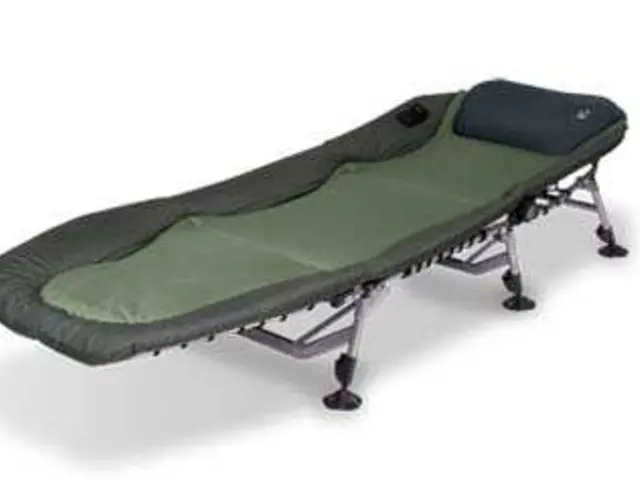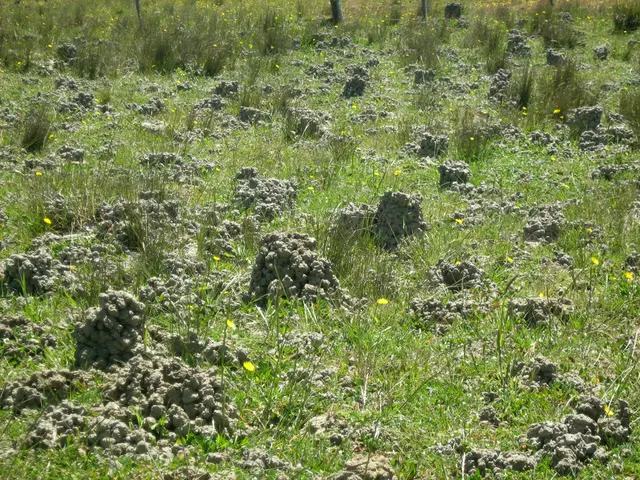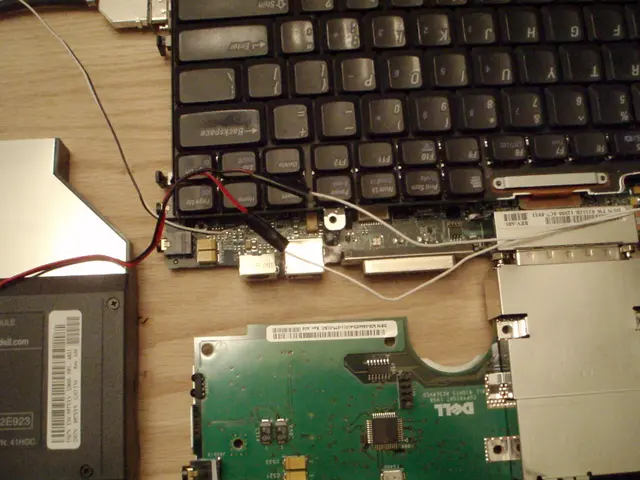MRSA Spread: Methods, Safeguards, and Further Insights
Methicillin-Resistant Staphylococcus Aureus (MRSA) Colonization: Understanding a Potential Health Threat
Methicillin-resistant Staphylococcus aureus, commonly known as MRSA, is a strain of bacteria notable for its resistance to numerous antibiotics. This resistance makes it a significant concern in global health.
While MRSA bacteria can reside on or within an individual's body without causing an infection, it is known as colonization. During this stage, there are typically no symptoms of an MRSA infection. Locations where MRSA colonization can occur include moist areas such as the nose, throat, groin, armpits, skin folds, and perineal area.
Despite the lack of symptoms, MRSA colonization is of significant concern for healthcare professionals. This is because carriers of MRSA bacteria can unknowingly transmit the bacteria to others, potentially leading to infections, especially in healthcare settings.
An MRSA infection is harmful due to the insusceptibility of the causing strain of Staphylococcus aureus to common antibiotics, such as methicillin, penicillin, amoxicillin, and oxacillin. This resistance makes it more challenging to treat and potentially more dangerous, particularly for vulnerable individuals.
MRSA can spread through close contact with infected or colonized individuals, sharing unsterilized equipment or supplies, environmental contamination of household surfaces, and improper sanitation practices.
To minimize the risk of MRSA colonization and infection, it is essential to maintain strict hygiene practices:
- Regular hand washing and showering with antiseptic soap
- Keeping wounds clean and covered
- Avoiding sharing personal items like towels, razors, clothing, and bedding
- Washing clothes, sheets, and towels in hot water and drying on high heat
- Routinely disinfecting surface areas
In medical settings, healthcare professionals may screen individuals for MRSA bacteria, particularly prior to surgery, by swabbing common infection sites. If detected, they may prescribe nasal creams or sprays, body wash, and shampoo to reduce MRSA bacteria levels. Usage usually lasts around 5 to 10 days.
Individuals should monitor their skin, particularly sites with cuts or abrasions, for signs of infection such as pain, redness, pus, swelling, and warmth.
Through consistent adherence to hygiene guidelines at home and in medical settings, individuals can contribute to the reduction of MRSA colonization and infection rates.
Further Information:
- Does MRSA go away on its own? MRSA may persist, disappear spontaneously, or remain for extended periods without causing an infection. However, continued monitoring and healthcare guidance are essential.
- Does chlorine kill MRSA? While chlorine can reduce MRSA bacteria levels, it may not completely eliminate it from surfaces and may require additional disinfection methods.
- Will I always carry MRSA bacteria? The duration of MRSA colonization varies among individuals. It can persist, resolve spontaneously, or linger for years without causing infection.
- MRSA, a superbug known for its resistance to numerous antibiotics, is a significant concern in global health-and-wellness.
- Despite the lack of symptoms, MRSA colonization is concerning for healthcare professionals due to its potential to spread and cause infections.
- The insusceptibility of the causing strain of Staphylococcus aureus to common antibiotics like methicillin, penicillin, amoxicillin, and oxacillin makes MRSA infections harmful.
- MRSA bacteria can reside in various locations on or within an individual's body, such as moist areas like the nose, throat, and skin folds.
- To minimize the risk of MRSA colonization, maintaining strict hygiene practices is essential, including regular hand washing and routinely disinfecting surface areas.
- In fitness-and-exercise, poor hygiene could potentially increase the risk of MRSA colonization.
- Mental-health conditions and chronic diseases may weaken an individual's immune system, making them more vulnerable to MRSA infections.
- Nutrition plays a crucial role in maintaining a strong immune system to combat MRSA and other infections.
- CBD has been suggested as a potential therapeutic treatment for various medical-conditions, including skin infections, but its effectiveness against MRSA is still under investigation.
- Financial challenges can affect an individual's access to quality healthcare services, increasing the risk of MRSA infections if preventive measures are not implemented.
- In lifestyle, prioritizing good hygiene and healthcare practices can help reduce the risk of MRSA colonization and infection.
- Food-and-drink, especially when prepared in unsanitary conditions, could potentially harbor MRSA bacteria.
- Investing in education-and-self-development on MRSA can empower individuals to make informed choices about their health and hygiene practices.
- Home-and-garden products, particularly those with antimicrobial properties, can aid in disinfection and reducing MRSA colonization.
- Businesses in the fitness, healthcare, and food industries must prioritize cleanliness to minimize the risk of MRSA transmission among clients and staff.
- Personal-finance management is essential for securing the resources needed to access quality healthcare and maintain good hygiene practices.
- In technology, advanced data-and-cloud-computing systems can help healthcare professionals track MRSA outbreaks and devise effective prevention and treatment strategies.
- Relationships can play a role in the spread of MRSA, as close contact with infected or colonized individuals could lead to transmission.
- Travel can potentially expose individuals to MRSA bacteria, emphasizing the importance of hygiene practices during travel.
- Car maintenance is important in the prevention of MRSA, as sharing unsterilized equipment like towels, gloves, or mats could potentially spread the bacteria.
- Books on MRSA and healthcare can provide valuable information on the superbug, its risks, and prevention strategies.
- Education-and-self-development courses on personal-growth can equip individuals with the knowledge to make informed decisions about their health and well-being.
- Shopping for antiseptic products, such as hand sanitizers and disinfectants, can help reduce the risk of MRSA colonization.
- Social-media platforms can serve as a source of information and support for individuals dealing with MRSA colonization or infection.
- Casinos and gambling establishments may have a higher risk of MRSA transmission due to close contact between patrons and the sharing of unsterilized equipment.








